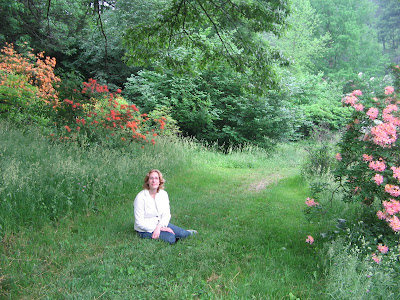One part of my slightly rough adjustment was the fact that I didn't really have a schedule to work around. I still don't, really, but I've put a few events in place that keep my week churning along.
My twice-weekly Italian course just came to an end, which leaves me with even more hours to fill. There are some lonely days, and I'm not always too keen to cave into the company of English speakers, but sometimes it's just easier to stick with your own kind than to venture embarrassing language errors with the natives. Though I recently signed up for a couple of courses at a low-cost continuing ed school, and already I've met some more people there. The first meeting of a class that tours the papal villas resulted in a new friendship with a Spanish girl (she speaks Italian and English beautifully), and a spontaneous trip to the magnificent Villa d'Este at Tivoli. The other course, tarot card reading (!), should lead to more contact too.
Until recently, twice a week I began my day with a swim in the marble piscina communale, a few minutes walk from my apartment. I actually just snuck in, but one is supposed to pay. When I first asked about signing up, the secretary said I would need to get written permission from a doctor, a requirement which must go back to the time of the plague. A new lifeguard finally asked my name as I was trying to get to the pool, catching my bluff. Any thoughts on how to forge a medical permission slip?
When I'm not reviewing my verbs or trying to make friends, I'm faccendo la turista, as they say. There are endless things to see, and my wonder grows with every day. During the first few days of walking around the antiquities with my Rick Steves book, I felt like a sheep in the herd, and I couldn't imagine spending the whole summer as a tourist by myself. Travelling alone can be great or excruciating.
But then, I dropped Rick for Georgina Masson's excellent guidebook called simply "The Companion Guide to Rome." I'm grateful to Leonora for recommending it to me as it's helped me find some of the most beautiful and extraordinary sights, and fill in the gaps of my knowledge of Roman history. Me and Georgina have spent many days together, mostly touring churches, which are as easy to be found as sand on the sea. The book works like magic. When she says to ring at number 40 and a nice old nun will take you in and show you the secret garden, it all happens as if choreographed.
At first, poking my head into the countless churches here, I wondered if I had made the right choice. Do I really have that much of a passion for religious art? But what I am picking up is a sense of the Baroque style, which of course relates to the music I study. Over the top dosn't accurately describe it all. Churches are littered with angels, colored marble, elaborate tombs, ornate frescoes, and the glitter of precious metals and candles. But what I like to think about is the time when all that glitter was not gaped at but simply sensed, as communities gathered for worship and fellowship. I wonder how Rome ever supported as many churches as it has, and it's true that many masses are underattended or even empty. But, in nearly every church I've visited, I've seen sacred spaces used for what they were intended for. The tourist couple kneeling at the altar at St. Paul's, the distressed woman taking a pew at the Chiesa dei Portogesi, the African usher singing along perfectly to the liturgy at the French church at the top of the Spanish steps, and the youth group singing in Tagalog at the medieval church of St. Pudienza. I went up to a young nun and said "In che lingua cantano loro?" "What?" she replied.
Subscribe to:
Post Comments (Atom)


No comments:
Post a Comment